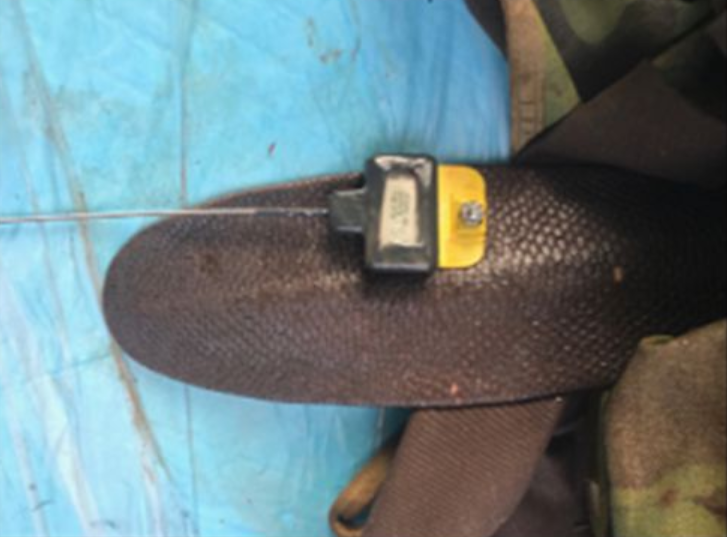Beavers are notorious for slipping out of their tracking devices. The Houdinis of the animal kingdom it is super hard for researchers to tell if they stay put where they were relocated. Of course researchers are busy people. They don’t have time to go back and look.
You know I’m so old that I remember a lady who saw her beavers every day for a decade and knew right away if a new kit was added to the family or a yearling had dispersersed and understood right away if a stranger was trying to move in on their territory.
But that was a very long time ago and the story might be apocryphal. Researchers need something they can analyze.
Environmental DNA reveals beaver presence
 A small vial of water collected two kilometers downstream is enough to reveal the presence of beavers in a waterway.
A small vial of water collected two kilometers downstream is enough to reveal the presence of beavers in a waterway.
“It’s pretty promising that they are very easy to detect,” said Jesse Burgher, a PhD candidate at Washington State University Vancouver.
The Washington Department of Fish and Wildlife had been translocating beavers around the state, either for conservation reasons to boost numbers in some regions or to remove problem beavers in others. But they didn’t have a good way of tracking whether beavers stayed in the places where they were translocated. VHF tracking devices attached to their tails didn’t stay on for very long, so they didn’t give a great picture of where translocated beavers were going.
I got really excited when I first saw this article. I am so naive that I assumed it meant they could track SPECIFIC beavers and see how they were doing. But no, that’s sentimental crap. They aren’t looking for a particular beaver.
Just the essence of generic beaver.
In a study published recently in Animal Conservation, Burgher and his colleagues turned to environmental DNA—or eDNA—techniques, to track the presence and absence of creatures in the wild.
Environmental DNA, which wildlife researchers are using in an increasing number of situations, involves taking environmental samples from soil, water or even air in some cases. Researchers then analyze these samples in the lab using DNA detection methods to determine the presence of the species they are looking for.
Can eDNA analysis find beavers?
In this case, the team used water to sample for the presence of 10 beavers that they released, split between 2020, 2021 and 2022. Before releasing VHF-tagged beavers in Gifford Pinchot National Forest and Mt. Baker-Snoqualmie National Forest in the Washington state Cascades near Leavenworth, the researchers first took water samples downstream from the planned release sites to make sure there weren’t any beavers there already.
They sampled the water again the day after each release, the following week, and after a month at various distances from the release site, up to 2 kilometers away. They continued to take samples for two subsequent months after the first month, as well.
In almost all cases, the researchers were able to detect beavers in the water samples the day after they were released. Regardless of the time and distance from the release site, they detected beaver presence 93% of the time. “[Environmental DNA] was fairly reliable at detecting them if they were upstream,” Burgher said.
Oh I guess that is fairly useful. To know if you helicopted 20 beavers into a stream that they are still hanging around that watershed.
Hey have you ever tested the water in public drinking fountains to find out if the city council members who voted to banish the beavers are still around? Because that would be plenty interesting too.






































